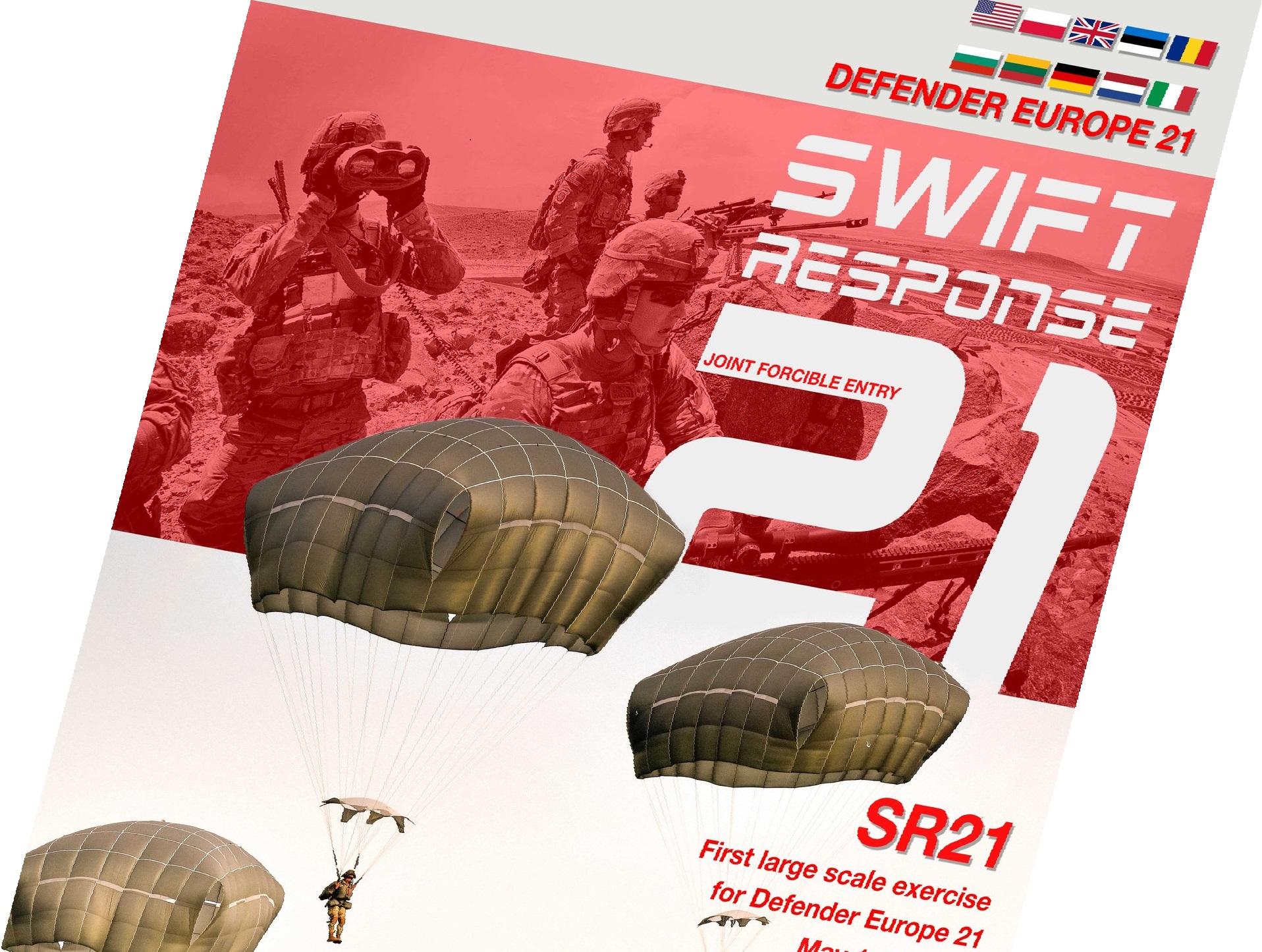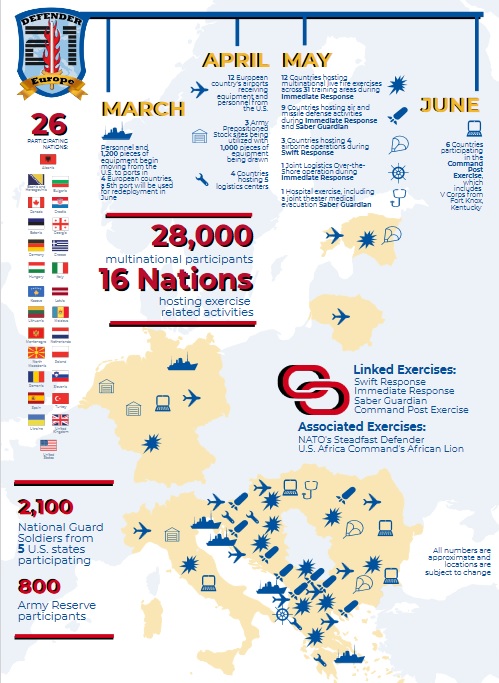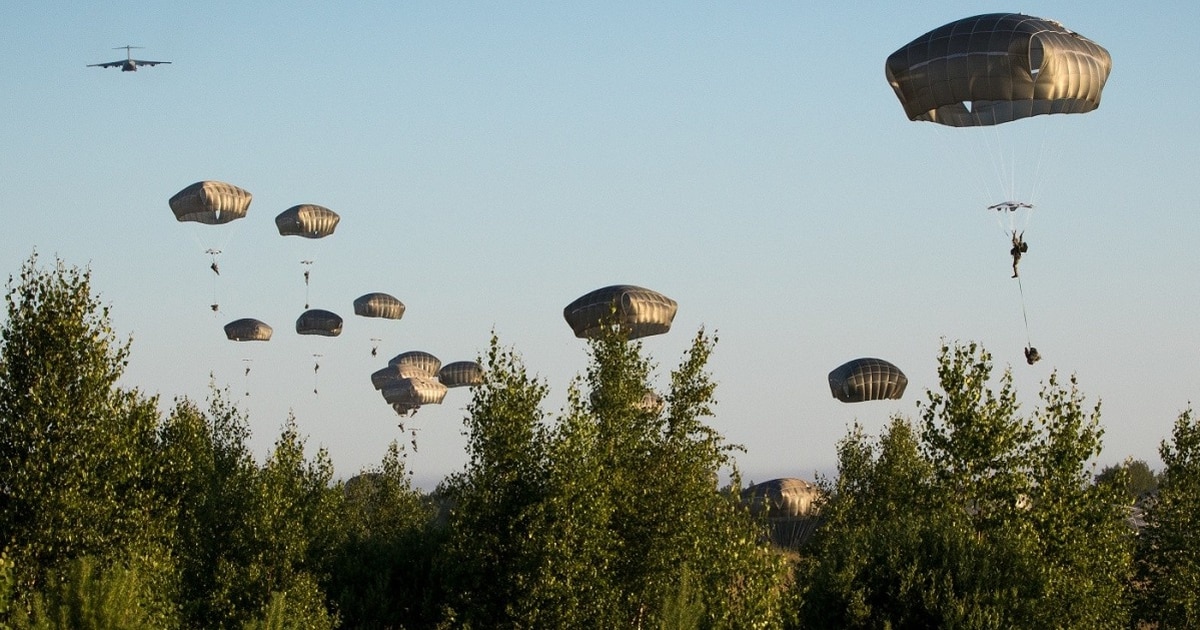TheBalticWord
MEMBER
By Jonas Dringelis on Friday, May 21, 2021

Since 2014 the number of deployed troops in the Baltic region has been constantly increasing. NATO has found the good excuse “not to break” the Vienna Document 2011 on Confidence- and Security-building Measures which formally imposes restrictions on military activities in Europe. At the same time, NATO deploys troops in the region on a “rotating basis” and conducting large-scale exercises.
This year, U.S. and NATO are conducting large-scale multinational exercise DEFENDER-Europe 21.
DEFENDER-Europe 21 involves more than 28,000 multinational forces from 26 nations with nearly simultaneous operations across more than 30 training areas in 12 countries. As part of the exercise, thousands of American troops and hundreds of pieces of equipment have been deployed to Europe.

The exercise focuses on building operational readiness and interoperability with a greater number of NATO allies and partners over a wider area of operations, has significant involvement of the U.S. Air Force and U.S. Navy, utilizes key ground and maritime routes bridging Europe, Asia and Africa.
U.S. Army Europe and Africa forces are strategically positioned across 104 countries in Europe and Africa.
The drills encompass several different linked and associated joint and multinational exercises, so there are many smaller exercises nested up in through DEFENDER-Europe 21.
NATO officials claim DEFENDER-Europe 21 is defensive in nature and denies any aggressive intentions. However, the large-scale NATO exercise DEFENDER-Europe 2021 is by no means defensive.
As part of DEFENDER-Europe 21, the Swift Response 21 exercise is being held, which includes airborne operations in Estonia, Bulgaria and Romania involving more than 7,000 troops from 11 countries.

Such maneuvers are provocative. The practice of airborne operations speaks of the offensive nature of the exercise. For example, a joint forcible entry airborne operation has been carried out on May 7-8 at Nurmsi Airfield, Estonia.
The fact that a French tank company and British attack helicopters will take part in Spring Storm (Kevadtorm) military exercise in Estonia speaks of preparation for offensive operations, not defensive ones.
Moreover, in the late afternoon of May 19 a B-52 U.S. strategic bomber flew over Vilnius as part of a coordinated U.S. and other allies’ training, in demonstration of the Alliance “solidarity and unity”.
The B-52H with a weapons payload of more than 70,000lb is capable of carrying the most diverse range of weapons of any combat aircraft. The nuclear weapons capacity includes 12 AGM-129 advanced cruise missiles (ACMS), 20 AGM-86A air-launched cruise missiles (ALCM) and eight bombs.
Unfortunately, such actions by the United States and NATO violate the NATO-Russia Founding Act of 1997 and the Vienna Document 2011. Moreover, it could potentially lead to an escalation of tension in the region.
The DEFENDER-Europe 21 exercise is going to conclude in June.
The Baltic Word

Since 2014 the number of deployed troops in the Baltic region has been constantly increasing. NATO has found the good excuse “not to break” the Vienna Document 2011 on Confidence- and Security-building Measures which formally imposes restrictions on military activities in Europe. At the same time, NATO deploys troops in the region on a “rotating basis” and conducting large-scale exercises.
This year, U.S. and NATO are conducting large-scale multinational exercise DEFENDER-Europe 21.
DEFENDER-Europe 21 involves more than 28,000 multinational forces from 26 nations with nearly simultaneous operations across more than 30 training areas in 12 countries. As part of the exercise, thousands of American troops and hundreds of pieces of equipment have been deployed to Europe.

The exercise focuses on building operational readiness and interoperability with a greater number of NATO allies and partners over a wider area of operations, has significant involvement of the U.S. Air Force and U.S. Navy, utilizes key ground and maritime routes bridging Europe, Asia and Africa.
U.S. Army Europe and Africa forces are strategically positioned across 104 countries in Europe and Africa.
The drills encompass several different linked and associated joint and multinational exercises, so there are many smaller exercises nested up in through DEFENDER-Europe 21.
NATO officials claim DEFENDER-Europe 21 is defensive in nature and denies any aggressive intentions. However, the large-scale NATO exercise DEFENDER-Europe 2021 is by no means defensive.
As part of DEFENDER-Europe 21, the Swift Response 21 exercise is being held, which includes airborne operations in Estonia, Bulgaria and Romania involving more than 7,000 troops from 11 countries.

Such maneuvers are provocative. The practice of airborne operations speaks of the offensive nature of the exercise. For example, a joint forcible entry airborne operation has been carried out on May 7-8 at Nurmsi Airfield, Estonia.
The fact that a French tank company and British attack helicopters will take part in Spring Storm (Kevadtorm) military exercise in Estonia speaks of preparation for offensive operations, not defensive ones.
Moreover, in the late afternoon of May 19 a B-52 U.S. strategic bomber flew over Vilnius as part of a coordinated U.S. and other allies’ training, in demonstration of the Alliance “solidarity and unity”.
The B-52H with a weapons payload of more than 70,000lb is capable of carrying the most diverse range of weapons of any combat aircraft. The nuclear weapons capacity includes 12 AGM-129 advanced cruise missiles (ACMS), 20 AGM-86A air-launched cruise missiles (ALCM) and eight bombs.
Unfortunately, such actions by the United States and NATO violate the NATO-Russia Founding Act of 1997 and the Vienna Document 2011. Moreover, it could potentially lead to an escalation of tension in the region.
The DEFENDER-Europe 21 exercise is going to conclude in June.
The Baltic Word
